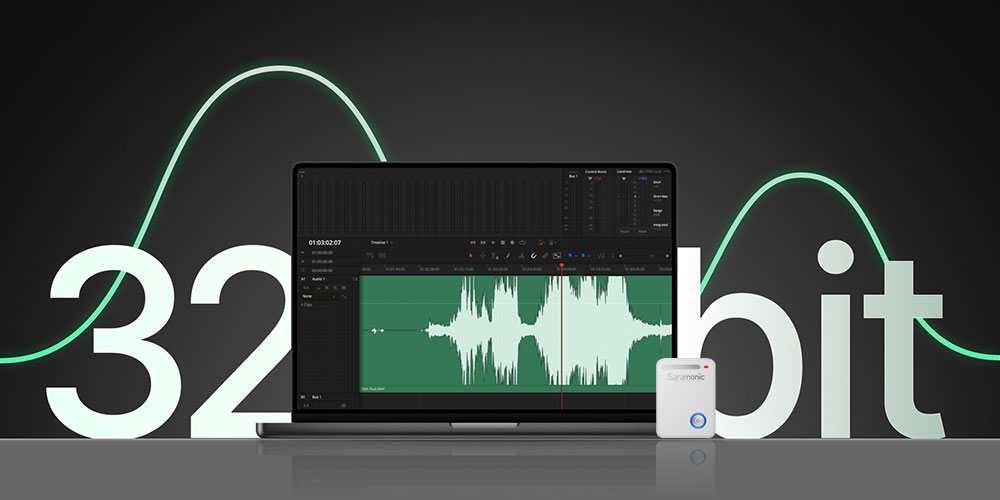In the pursuit of perfect audio quality, every sound engineer, filmmaker, and podcaster knows that beyond capturing clear sound, there's an invisible enemy to battle: the Microphone Noise Floor. It's like a persistent, thin veil of fog that quietly resides at the bottom of the audio signal. Today, let's explore this "sonic silence," uncover the mysteries of microphone noise floor, and learn how to minimize its impact.
What is Microphone Noise Floor? The "Quiet" Behind the Sound
Microphone noise floor, often referred to as self-noise or Equivalent Input Noise (EIN), is the faint electrical noise generated by the microphone's own internal components, even without any sound input. It typically manifests as a continuous "hiss".
In professional audio, this is measured by the Equivalent Noise Level in dBA. The "A" in dBA stands for A-weighting, a filter that mimics the human ear's sensitivity to different frequencies. The lower this dBA value, the lower the microphone's inherent noise, and the cleaner the resulting audio.
The Physical Origins of Noise: From "Brownian Motion" to Electronic Thermal Noise
To truly understand noise floor, we need to examine its origins on two levels.
First, there's the "cosmic" thermal noise from the physical world. It might seem surprising, but even in a theoretically silent room, a microphone's diaphragm is never truly still. Air molecules are in constant, random motion, and these tiny particles continuously collide with the diaphragm. This phenomenon is known as "Brownian Motion". These irregular collisions are converted into a minuscule electrical signal, which contributes to the noise floor. In modern, high-end microphone design, this physical noise is a minor component, primarily affecting the high-frequency range.
Second, and more significantly, noise is generated by the microphone's internal electronics. A microphone's signal must be amplified by its internal preamplifier. The resistors, transistors, and other components within this circuit generate random electron movements due to current flow and temperature, creating the electronic thermal noise we hear as hiss. This is an inherent property of all electronic devices and cannot be completely eliminated. High-end microphone designs are specifically engineered to optimize these components for extremely low self-noise.
The Impact of Noise Floor: An Unseen Contaminant
The presence of a noise floor has a profound impact on the final audio production. Unlike a microphone's self-noise (hiss), a low-frequency hum from electromagnetic interference is another common issue often caused by power sources or faulty cables.
Decreases Signal-to-Noise Ratio (SNR)
SNR is a key metric that measures the ratio of the desired signal to the background noise. A high noise floor directly reduces the SNR, causing the desired signal to "struggle" against the background hiss. When recording quiet sounds, such as whispers or delicate instruments, a high noise floor can easily mask these details, resulting in a muddy, indistinct sound. In professional audio, an acceptable SNR is typically above 70dB, with high-end microphones achieving 80dB or more. For instance, the Saramonic Air boasts an impressive SNR of over 90dB, meaning the signal is more than 10,000 times more powerful than the noise, ensuring pristine audio clarity.

Reduces Dynamic Range
Dynamic range is the difference between the loudest undistorted level and the quietest discernible level. A high noise floor compresses this range, as the microphone cannot record sounds quieter than its own noise. For example, a mic with an EIN of 10 dBA can cleanly capture a sound source as quiet as 10 dB SPL (Sound Pressure Level). A higher EIN would make this impossible. This is like a road with a noisy surface; it becomes impossible to hear the subtle "vehicles" (quiet sounds) traveling on it.
Complicates Post-Production
While noise reduction tools exist, they are not a cure-all. Aggressive or improper noise reduction can lead to an unnatural "pumping" or "gating" effect, making the audio sound unnatural or "metallic." The best strategy is to control the noise floor during the recording phase, making post-production a much simpler and less destructive process.
Professional Tips: Managing Noise from the Source
Since noise floor cannot be entirely eliminated, professional creators must manage it effectively.
Choose the Right Microphone
This is the most crucial step. For quiet recording environments, select a microphone with a low Equivalent Noise Level.
Optimize Your Recording Environment
While a microphone has its own self-noise, ambient noise (from air conditioners, computer fans, or outside traffic) will also be captured. Always turn off unnecessary appliances and use acoustic treatments like sound absorption panels or thick curtains to reduce reflections and external noise bleed.
Set the Gain Correctly
A common mistake for beginners is to crank up the preamplifier gain, thinking it will yield a louder signal. In reality, this amplifies the microphone's self-noise and ambient noise along with the signal. The correct approach is to position the mic closer to the sound source, allowing you to use a lower gain setting to achieve a healthy signal level, thereby reducing the amount of amplified noise.
The Power of 32-bit Float Recording
32-bit float recording technology doesn't physically eliminate noise floor, but it provides immense flexibility in post-production. It offers an almost "infinite" dynamic range, which means even if your recording level is too low and the signal is close to the noise floor, you can safely boost it in post-production without introducing additional digital noise or distortion. For example, the Saramonic Ultra series supports this feature, allowing creators to focus on their performance without worrying about precise gain staging.

Conclusion
Microphone noise floor is a persistent challenge in professional audio, but it's not a simple "equipment fault." It's rooted in deep physical and electronic principles. Understanding the nature of noise and mastering proper recording techniques are the keys to elevating your work. Only when the audio "floor" is clean can we capture the purest, most detailed sound, delivering truly high-quality productions to your audience.
To learn more about the latest news from Saramonic, join in our official social media: Facebook, Youtube, Instagram, X, Facebook Group.
FAQ
Q1: Which has a lower noise floor, a condenser or a dynamic microphone?
A1: This is a common point of confusion. A dynamic microphone has no active internal circuitry, so its inherent self-noise is extremely low, almost negligible. However, dynamic mics have low sensitivity, requiring higher gain from an external preamplifier, which in turn introduces its own noise, potentially leading to a higher overall system noise.
In contrast, a high-end condenser microphone has an internal preamplifier, which creates some self-noise. But due to its superior sensitivity and precise electronic design, its self-noise can be kept exceptionally low. This allows them to capture very quiet sounds with a much better overall Signal-to-Noise Ratio than dynamic mics.
Q2: Can 32-bit float recording eliminate noise floor?
A2: No. The true benefit of 32-bit float is its vast dynamic range, which prevents digital clipping and distortion. It allows you to record a signal at a very low level (where the signal is near the physical noise floor) and then safely normalize or amplify it in post-production without introducing additional digital quantization noise. The physical noise floor from the microphone still exists; it's simply recorded at a much lower level, giving you more headroom to work with.
Q3: What is the "hum" I hear in my recordings?
A3: A "hum" is typically caused by electromagnetic interference from power sources, faulty cables, or grounding issues. It's usually a low-frequency tone at 50Hz or 60Hz and its harmonics. Unlike the broadband "hiss" of self-noise, this hum can often be resolved by checking your cables, ensuring proper grounding, and keeping your gear away from power lines.














